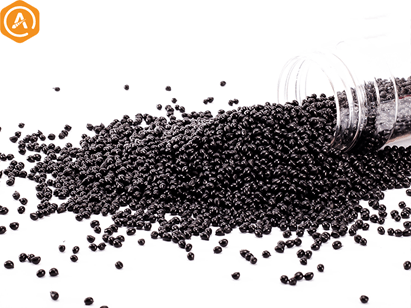Black Masterbatch
Black Masterbatch is the second most widely used color masterbatch in the world, also known as Carbon Black Masterbatch. Due to its numerous advantages, this masterbatch has a wide range of applications in various industries. According to some reports, the market for this masterbatch is estimated to be around $2.4 billion in 2021 and is expected to reach approximately $3 billion by 2026. This Masterbatch contains a high concentration of black pigment, a base polymer, and special additives, which are produced in granular form.

One of the unique features of this masterbatch compared to most other pigments is that it is produced in granular form as a masterbatch, which has several advantages for the consumer, including:
– High dispersion of the masterbatch in the final product
– High thermal stability
– Easy processability
– Reasonable price
– Ability to use other additives such as anti-UV masterbatches, processing aids, moisture absorbers, etc.
CB Masterbatch has various applications in different industries, and one of its most significant uses is in the automotive industry. Demand for this masterbatch has increased rapidly since the use of polymers was promoted with a view to reducing weight and breaking prices.

Another common application of black masterbatch is in packaging films, such as garbage bags and shopping bags. As mentioned earlier, the granular form of this masterbatch product leads to better dispersion of the pigment and, as a result, creates a smooth surface in garbage bags.
Black masterbatch is also widely used in the production of pipes, fittings, tubes, and rails, among other products. The use of this masterbatch in these products not only gives them a more attractive appearance but also creates a protective layer for increasing their stability against environmental, chemical, frictional, and impact factors.
The use of CB masterbatch in geomebranes leads to thermal stability and resistance to UV radiation. Additionally, the black pigment used in these masterbatches reduces the degradation of the base polymer of geomebranes.
